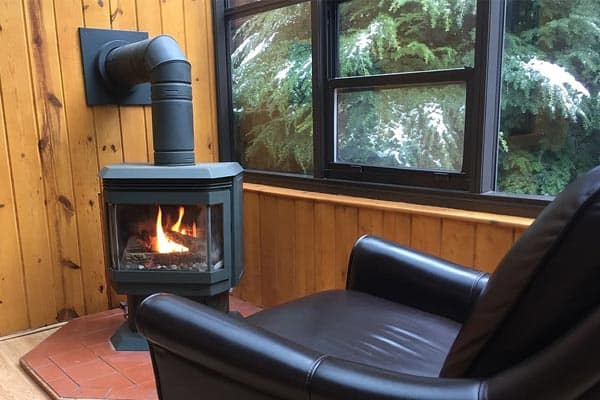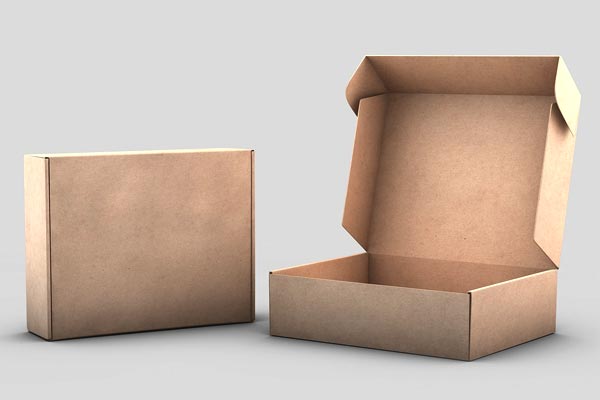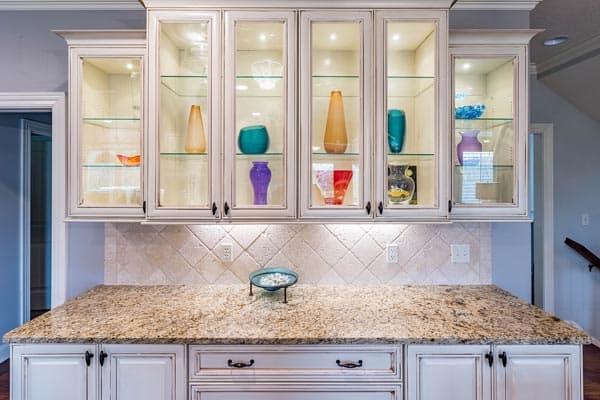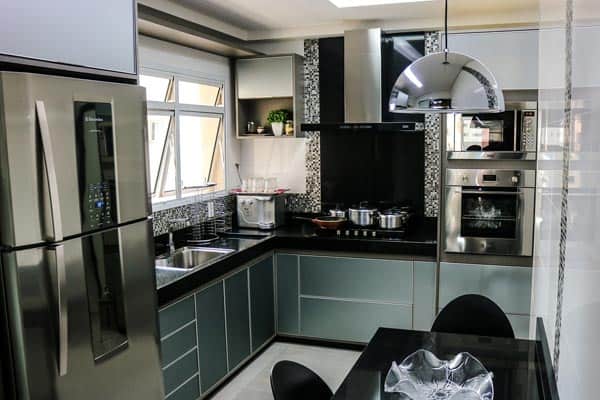How to Keep Wood Stove Burning All Night – Step-by-Step Guide
A wood-burning stove is a cost-efficient alternative to heating your home, but some people find it challenging to keep the fire burning through the night.
Eventually, they can end up with smoldering fires that don’t produce a lot of heat, but you can do a few simple things to ensure your wood stove stays burning all night.
How to Keep Wood Stove Burning All Night
To keep the wood stove burning all night, you have to remove unusable ash, rake the live coals, add kindling, pick a few pieces of dry, harder wood, stack the logs correctly, reignite the fire, and open the air inlets before reducing the airflow. This will help the fire burn all night without reducing it to a smoldering mess with no additional input from you.
If this sounds like a lot of work and you’re not confident enough to do it alone, this is for you.
This comprehensive guide will outline each step you have to take to ensure the wood stove burns all night without creating excess work for you.
Part One – Setting up the Front of the Stove
There are a few things you have to do to set up the front of the stove to give your fire a solid foundation to burn all night.
1. Remove Any Unusable Ash
Get a pair of heat-resistant gloves and a fireplace shovel to clear white ash pieces from the front of the stove.
Put the ash in something that you can safely throw away. Be careful with this step because the ash can get messy.
If the fire is still burning, don’t pull the ash from anywhere else on your stove because the ash in the middle can burn through your box or bag.
2. Rake the Live Coals in the Air Inlet Area
Get a long-handled rake and reach into the stove before positioning the rake at the bottom of your stove.
Pull it toward you to put the coals in the front of the stove. They should now take up half of the stove.
Keep the coals as close to the door as possible while leaving a clear space in the back for new long.
3. Add a Small Kindling Amount
If the fire has burned for a long time, you may need to reignite it. Once you position your logs, put four or five crumpled newspaper pieces on top of the coals to restart the fire.
The coals are still hot in a few places, so the newspaper may light up quicker than you anticipate.
Part Two – Position the Logs and Ignite Them
Once you have a clear space, it’s time to position the logs to ensure they burn all night. In the previous steps, you’ll put them in the space you cleared out in the back of the stove.
1. Select One Big Piece and Two Smaller Pieces of Pine, Hickory, or Oak
These wood types tend to burn slower, and you want larger logs that will still fit nicely in the stove when laid down horizontally.
If you don’t have any pine, hickory, or oak available, you might need to pick two bigger pieces and four to five smaller pieces of other wood types to use.
2. Check the Logs for Dryness
Look for wood pieces that have even coloring and feel dry when you touch the bark at the ends.
Avoid wood with green spots or that gets a moisture meter, and pick logs with moisture levels below 20%. You could also buy firewood at a garden center or home improvement store.
3. Place the Bigger Log
The bigger log will go in the back of your stove behind the coals, and you may need to use the poker, shovel, or rake to get it horizontally.
Push it against the back of the stove, away from the coals and even with the floor. This will make the largest piece of wood burn last and longest.
4. Stack the Smaller Pieces of Wood Horizontally
Get your fireplace tools and carefully add the other pieces of wood to the stove around the bigger log.
One smaller piece has to touch the coals, and the smaller pieces should cover the big log on the front and top to insulate it.
Don’t put any smaller pieces behind the larger ones, and pack the pieces as tightly as possible to provide insulation. With this setup, your fire can burn for six to eight hours.
5. Reignite the Fire
If you had to add newspaper kindling earlier, it’s not to ignite it to catch the coals back on fire. Close the door, let the newspapers burn down, and turn the coals red.
If the coals don’t heat up, you’ll have to add four to five more kindling pieces to add more heat.
Part Three – Ensuring it Burns Safely
The final part of the process is to ensure that you stay safe while you get the fire to burn all night.
1. After Adding the Load, Open the Air Inlets for 15 to 30 Minutes
Turn the lever that controls your air vents to open them all the way to add oxygen to the stove, which will help fuel the fire as it starts to burn.
Never leave your stove unattended while the vent is open. During this process, keep an eye on the coals to ensure they don’t heat up too quickly.
2. Reduce the Airflow When a Thick Charcoal Forms
Around 15 minutes after you start burning the coals, look at the logs in the back of the stove to see if they have a thick charcoal coating.
Close the air inlet slowly until it’s barely open to control how quickly it burns by restricting the amount of oxygen available in the stove at one time. Don’t close the air vent completely, or you’ll smother the fire.
3. Remove the Ashes in the Morning
When you get up in the morning, get your fireplace shovel, gather up the used ash, and dispose of it safely.
This will prepare the stove for burning another load the next night. If you won’t burn it anytime soon, remove all of the ash to prevent it from flaring up again.
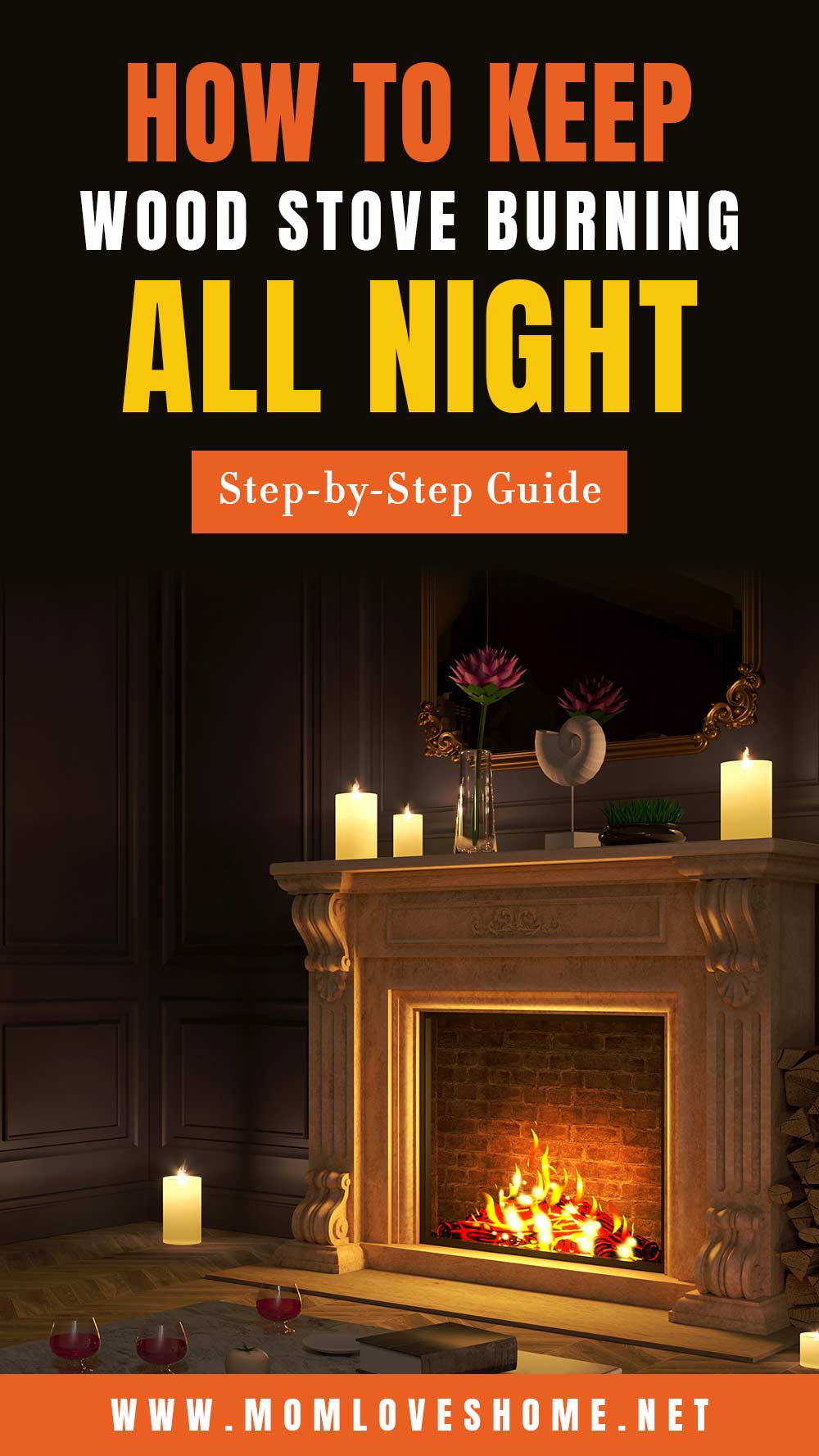
Four Reasons Why Your Wood Burns So Fast
There are a few reasons why your wood stove can burn too fast during the night. Narrowing down what is wrong will allow you to have a low fire from when you go to bed to when you wake up.
1. You Have the Air Vents Open Too Far
The air vents being open too far is one of the main reasons why your fire burns too fast.
To help the wood burn efficiently, your stove has to create an environment where the amount of wood and the airflow can be controlled to give it more heat.
If you leave the air vents wide open, this increased airflow can cause the fire to burn through the wood much quicker.
To slow down how quickly you burn through the wood at night and make your stove operate much more efficiently, you should close the air vents in stages until the fire calmly starts to burn through the wood without struggling due to low oxygen.
2. You’re Using Softwoods
A second common reason the fire doesn’t last the whole night is that you’re burning softwood logs rather than hardwood logs.
Hardwoods like ash or oak are much denser than softwoods like pine, so the fire takes longer to burn through them. Hardwoods have a denser makeup because the trees can take longer to grow.
3. Your Seal on the Door Failed
The door’s gasket will create an airtight seal between the stove’s body and the door.
If your stove burns through wood quickly, your door seal gasket could have failed, letting excess air into the stove with no control. The seals usually feature woven fiberglass ropes that line the door’s edge on your stove.
4. Your Logs Aren’t Large Enough
Larger pieces of wood last longer when they burn than smaller ones, and this is because the smaller logs have a greater surface area in relation to volume.
You could find that swapping burning several small logs with a few larger ones can increase your burn time.
We like to have two bigger logs to help maximize the time it burns between logs and the heat it generates.
Bottom Line
Keeping the fire burning all night in your wood stove isn’t necessarily hard, but it does take some time and effort.
Following the steps outlined above will help you get a warm fire that’s still going when you get up in the morning from the night before.
